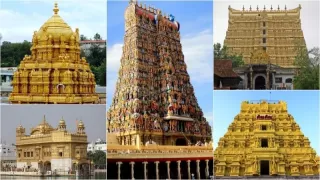India’s aviation sector is soaring to new heights, with the biggest airports in India in 2025 setting global benchmarks for scale, infrastructure, and passenger experience. As demand for air travel surges, airports across the country are expanding to accommodate millions of travelers and growing cargo volumes, positioning India as a major aviation hub in Asia.
These mega-airports are more than transit points—they’re engines of regional growth, urban development, and economic transformation. Bigger airports enable more flights, deeper connectivity, and better amenities for both passengers and business operations. In this 2025 update, we explore the top 5 largest airports in India by land area, offering detailed insight into each hub’s architecture, capacity, and future trajectory.
5. Goa – Dabolim Airport (Panaji)
- Area: ~1,700 acres
Dabolim Airport is unique in India because it operates in a dual civilian-military mode. Covering around 1,700 acres, it is constrained by its older infrastructure and its joint use with the Indian Navy. Still, it remains one of Goa’s principal air gateways and handles a mix of scheduled domestic, international, and charter flights.
Despite spatial limitations, Dabolim has architectural character—its Portuguese-influenced terminal gives it a distinct aesthetic. Because of land constraints, the airport focuses on optimizing operational efficiency: rapid turnarounds, use of remote stands, and tight scheduling. It continues to be essential for tourism traffic, especially as a fallback and partner to the newer Mopa facility.
4. Goa – Manohar International Airport (Mopa)
- Area: ~2,132 acres
Mopa Airport, inaugurated in the early 2020s, is Goa’s new flagship airport. With about 2,132 acres of land, it was conceived as a sustainable modern gateway to serve rising tourist demand and relieve pressure on older airports. Its terminal design reflects the coastal context and incorporates energy-efficient lighting, strategic landscaping, and wildlife corridors to minimize environmental impact.
Though still relatively new, Mopa is already growing in importance. It complements the existing Dabolim Airport by absorbing some of the tourism traffic and providing additional capacity for charter, international, and seasonal flights. The airport is positioned to catalyze regional development and elevate Goa’s role as an aviation and tourism node.
3. Bengaluru – Kempegowda International Airport
- Area: ~4,008 acres
Kempegowda International Airport in Karnataka is an innovation-forward hub, covering around 4,000 acres. The airport has embraced modern automation—features like facial recognition boarding, efficient passenger flows, and an aesthetic “Terminal in a Garden” concept help it stand out. It supports a robust mix of domestic and international flights, acting as a key gateway for India’s booming tech and startup economy.
Spatially, the airport has room to grow: its vast acreage allows room for new terminals, extended cargo zones, and future runway expansion. It has also become a major export hub, especially for perishables and high-tech shipments. As the Bengaluru metro region expands, Kempegowda is well placed to serve both urban growth and regional connectivity.
2. New Delhi – Indira Gandhi International Airport
- Area: ~5,106 acres
IGI Airport in Delhi is India’s busiest airport in terms of passenger traffic, and by area it comes in as the second largest. Spanning over 5,100 acres, it houses multiple terminals (including the massive Terminal 3), an advanced runway system, and extensive passenger amenities. IGI also integrates high-efficiency baggage handling, utilities, and self-sufficient energy systems. Its operations cater to both domestic and international traffic at very high scale.
Its role as a national and international hub is unmatched: IGI connects India’s capital region to Europe, Asia, the Middle East, and beyond. With continuously rising passenger numbers, the airport often runs near peak capacity, prompting ongoing upgrades to terminals, access roads, and ground transport connectivity (rail, metro, expressways). The airport also acts as a benchmark for how modern Indian airports balance traffic load, infrastructure, and service quality.
1. Hyderabad – Rajiv Gandhi International Airport
- Area: ~5,500 acres
Hyderabad’s Rajiv Gandhi International Airport (RGIA) is India’s largest airport by land area, sprawling across around 5,500 acres. Much of this vast land remains reserved for future expansion, making it one of the most scalable airports in the country. Its infrastructure is state-of-the-art: the terminal building spans hundreds of thousands of square meters, designed to handle high passenger volumes and aircraft of all classes, including the Airbus A380. The airport is built with sustainability in mind—it houses a robust solar power plant and extensive rainwater harvesting capacity.
Beyond just size, RGIA plays a pivotal role as a cargo and connectivity hub. It caters to both domestic and international flights, linking Hyderabad with major global and regional destinations. The airport’s modular design allows expansion in phases, and authorities have mapped out plans to raise its capacity significantly in coming years. Its strategic location, near India’s geographic center, ensures relatively even flight distances to many cities—making it a logical node for connecting traffic.
Also Read: Top 10 Biggest Airports in the World 2025-26 Ranked




























